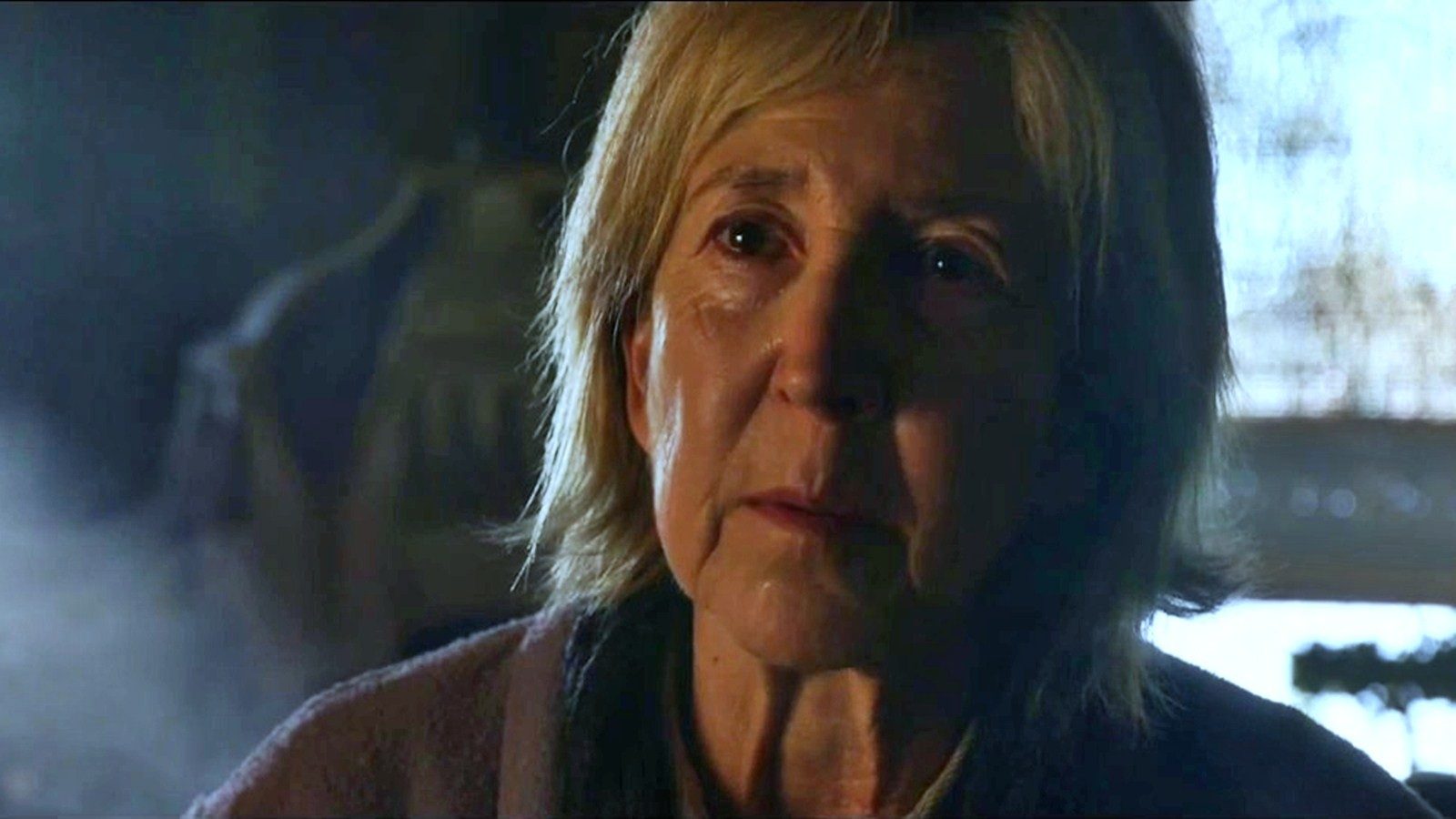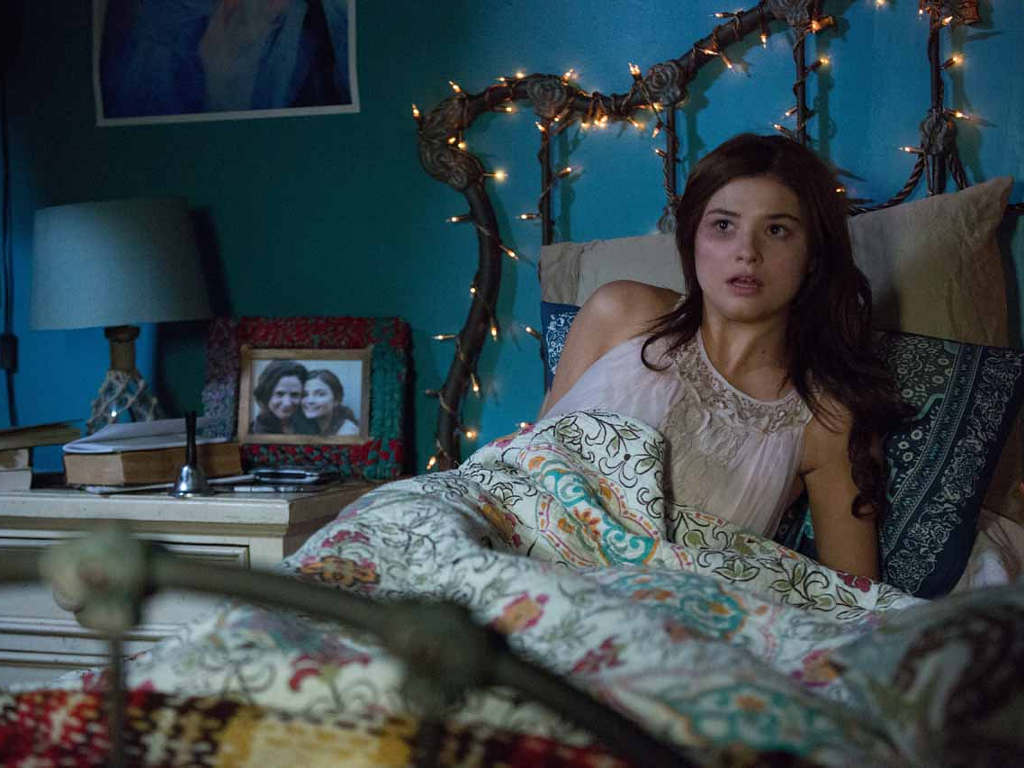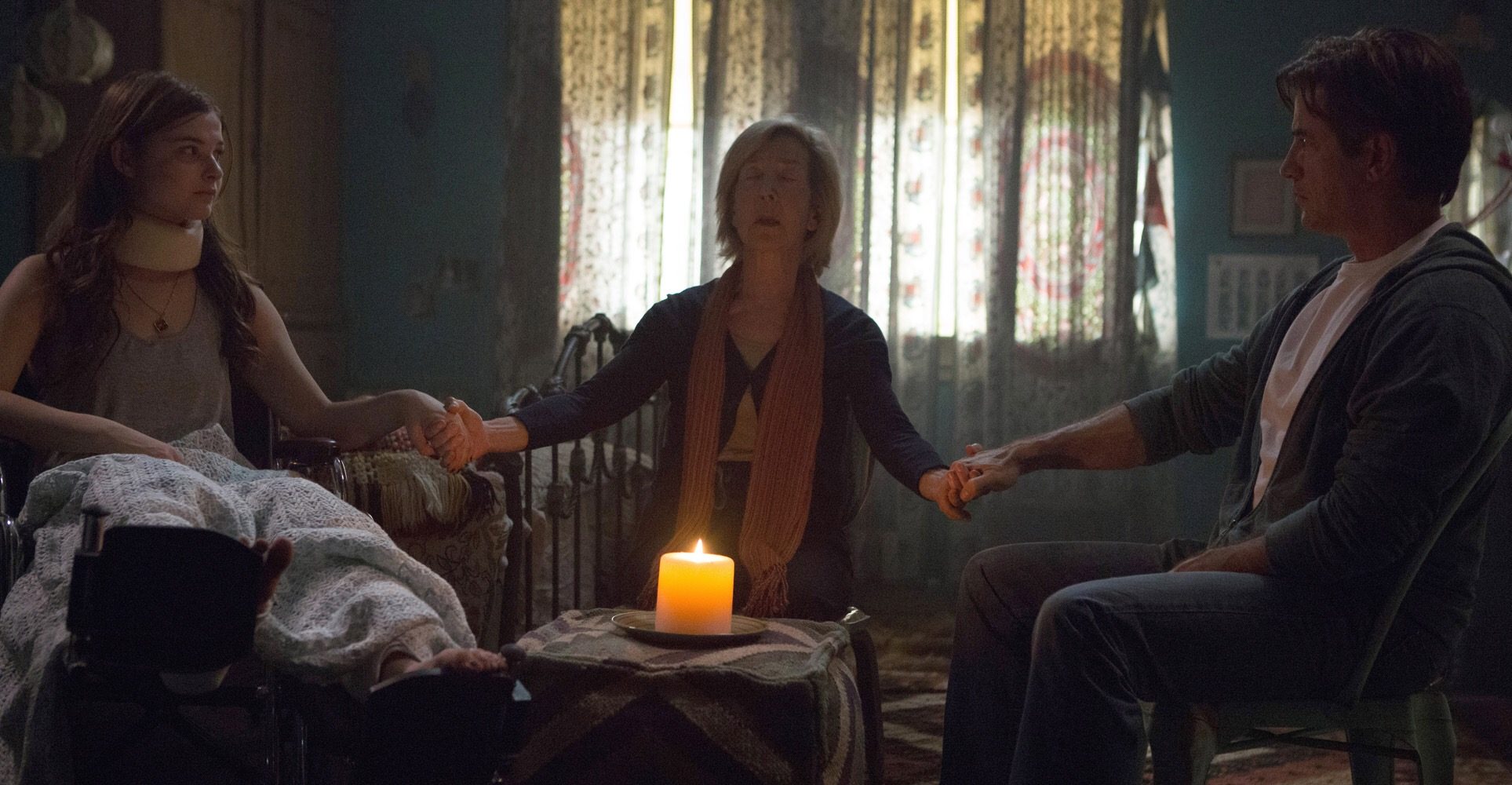

Horror movies are a rather unique beast in the film industry. They tend not to be too expensive to make, typically don’t rely on star power, and any film has the potential to balloon into a never-ending franchise based on brand-awareness and one-upmanship. Insidious: Chapter 3, the third film in the series started by 2011’s Insidious (though paradoxically a prequel to the first two), stars series newcomers Dermot Mulroney and Stefanie Scott, and returning cast members Lin Shaye, Leigh Whannell (also making his directorial debut with this film), and Angus Sampson.
Quinn Brenner (Scott) is just an ordinary girl: she dreams of being an actress, likes to read, owns an attractive amount of Pixies memorabilia, and cares for her snotty younger brother. Her mother’s death has left a chasm between her and her father Sean (Mulroney), who glosses over the subject and wishes for everything in his life to run smoothly. Quinn is certain that her mother is attempting to contact her from beyond the grave, and that is where she gets herself into trouble.
Elise (Shaye) is an elderly widow who formerly made her living contacting those who have passed on for those who have not. Quinn enlists her help in making contact with her mother, and even though Elise is sympathetic to the girl’s plight, she is unable to help her beyond providing cryptic warnings regarding the deceased. Naturally, as they must in the horror genre, things go terribly wrong for the sympathetic protagonist. She is haunted by a creature that starts his haunting at the fringes of her line of sight, but becomes increasingly bold and violent in his torments. Quinn winds up with her legs broken and the demon closing in as her father and Elise struggle to solve the problem before it is too late.
Insidious: Chapter 3 is a terribly predictable film, and most of the plot points are telegraphed well before they actually become integral to the plot, but it has some legitimate scares in spite of the fact. The demonic entity terrorizing Quinn is left largely unexplained: he is a silent, nearly omnipresent force of danger and fear. Whannell demonstrates some wise directorial instincts, allowing for the creature to remain subtle in many of his appearances. He might suddenly be behind someone, nearly blending into the wallpaper, or staring from behind a sheer curtain.
Elise, a carryover from the first two films, is given something of an origin story here, or as much of one as can be given to a septuagenarian. The film only truly feels like the prequel it is in scenes involving Elise, and even then, it is only a few towards the end of the film that scream “set-up” for the already-released future installments. Lin Shaye adds a certain legitimacy to a role that could have so easily become clichéd and laughable, balancing Elise’s strength, courage, and cool with a deeply entrenched sense of sorrow and uncertainty.
Stefanie Scott is excellent as Quinn, a teenager who is actually playing a teenager (what a novelty!), and is likable enough to give the proceedings of Insidious: Chapter 3 some weight beyond what most typical scream queens can provide. Much of the character’s likability may seem a touch too manufactured: she acts, she’s a reader, she has a cool best friend, she’s a mother figure, she wears tee-shirts of cool bands before her time, etc. It may at first look like a gimmick to foster a basic connection with the audience, but, to the movie’s credit, Quinn’s personality is fully formed by the time she’s being terrorized in her bedroom and Dermot Mulroney begins to look frantic.
Dermot Mulroney provides the requisite recognizable face for Insidious: Chapter 3, a role previously fulfilled by Patrick Wilson and Rose Byrne. Mulroney does good work, as he typically does, but is left portraying a rather thin character. Sean is sympathetic, but mainly serves as a character for Quinn, and later Elise, to bounce off of during pivotal sequences.
Other characters similarly fall short of the depth supplied to Quinn and Elise. Quinn’s best friend can be summed up by two qualities: rebellious, but also a good friend. The boy next door who makes eyes at Quinn has two qualities as well: cute, but he mumbles. Additionally, Quinn’s younger brother disappears for lengthy stretches at a time, but somehow manages to get a line or two of dialogue close to the climactic events. These characters flesh out the world inhabited by Quinn and her father, but they ultimately do not serve a purpose other than establishing that Quinn is a teenager with a friend, a crush, and a brother.
Unlike many horror films of this day and age, Insidious: Chapter 3 is not framed using a found footage stylistic device, even though there is actually a logical reason within the film to do so. Whannell proves to be able director in his debut, knowing when to use restraint and let the camera linger. The fact that much of the action is not frantic, allows for the scares to be more sudden and unexpected, and therefore, more frightening.
Verdict: 3 out of 5
Insidious: Chapter 3 is a solid horror flick that manages to avoid the pitfalls one would typically associate with either a third installment or a prequel. It’s not breaking new ground, but more than manages to stand on its own merits without requiring knowledge of the first two films of the series. Well-acted, particularly by Stefanie Scott and Lin Shaye, it is an enjoyable diversion despite a thin supporting cast of characters and the absence of any genuine surprise.



